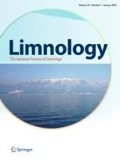Abstract
There have been numerous sediment quality guidelines (SQGs) developed during the past 20 years to assist regulators in dealing with contaminated sediments. Unfortunately, most of these have been developed in North America. Traditionally, sediment contamination was determined by assessing the bulk chemical concentrations of individual compounds and often comparing them with background or reference values. Since the 1980s, SQGs have attempted to incorporate biological effects in their derivation approach. These approaches can be categorized as empirical, frequency-based approaches to establish the relationship between sediment contamination and toxic response, and theoretically based approaches that attempt to account for differences in bioavailability through equilibrium partitioning (EqP) (i.e., using organic carbon or acid volatile sulfides). Some of these guidelines have been adopted by various regulatory agencies in several countries and are being used as cleanup goals in remediation activities and to identify priority polluted sites. The original SQGs, which compared bulk chemical concentrations to a reference or to background, provided little insight into the ecosystem impact of sediment contaminants. Therefore, SQGs for individual chemicals were developed that relied on field sediment chemistry paired with field or laboratory-based biological effects data. Although some SQGs have been found to be relatively good predictors of significant site contamination, they also have several limitations. False positive and false negative predictions are frequently in the 20% to 30% range for many chemicals and higher for others. The guidelines are chemical specific and do not establish causality where chemical mixtures occur. Equilibrium-based guidelines do not consider sediment ingestion as an exposure route. The guidelines do not consider spatial and temporal variability, and they may not apply in dynamic or larger-grained sediments. Finally, sediment chemistry and bioavailability are easily altered by sampling and subsequent manipulation processes, and therefore, measured SQGs may not reflect in situ conditions. All the assessment tools provide useful information, but some (such as SQGs, laboratory toxicity and bioaccumulation, and benthic indices) are prone to misinterpretation without the availability of specific in situ exposure and effects data. SQGs should be used only in a “screening” manner or in a “weight-of-evidence” approach. Aquatic ecosystems (including sediments) must be assessed in a “holistic” manner in which multiple components are assessed (e.g., habitat, hydrodynamics, resident biota, toxicity, and physicochemistry, including SQGs) by using integrated approaches.
Similar content being viewed by others
Author information
Authors and Affiliations
Additional information
Received: December 26, 2000 / Accepted: December 28, 2001
Rights and permissions
About this article
Cite this article
Burton, Jr., G. Sediment quality criteria in use around the world. Limnology 3, 65–76 (2002). https://doi.org/10.1007/s102010200008
Issue Date:
DOI: https://doi.org/10.1007/s102010200008




